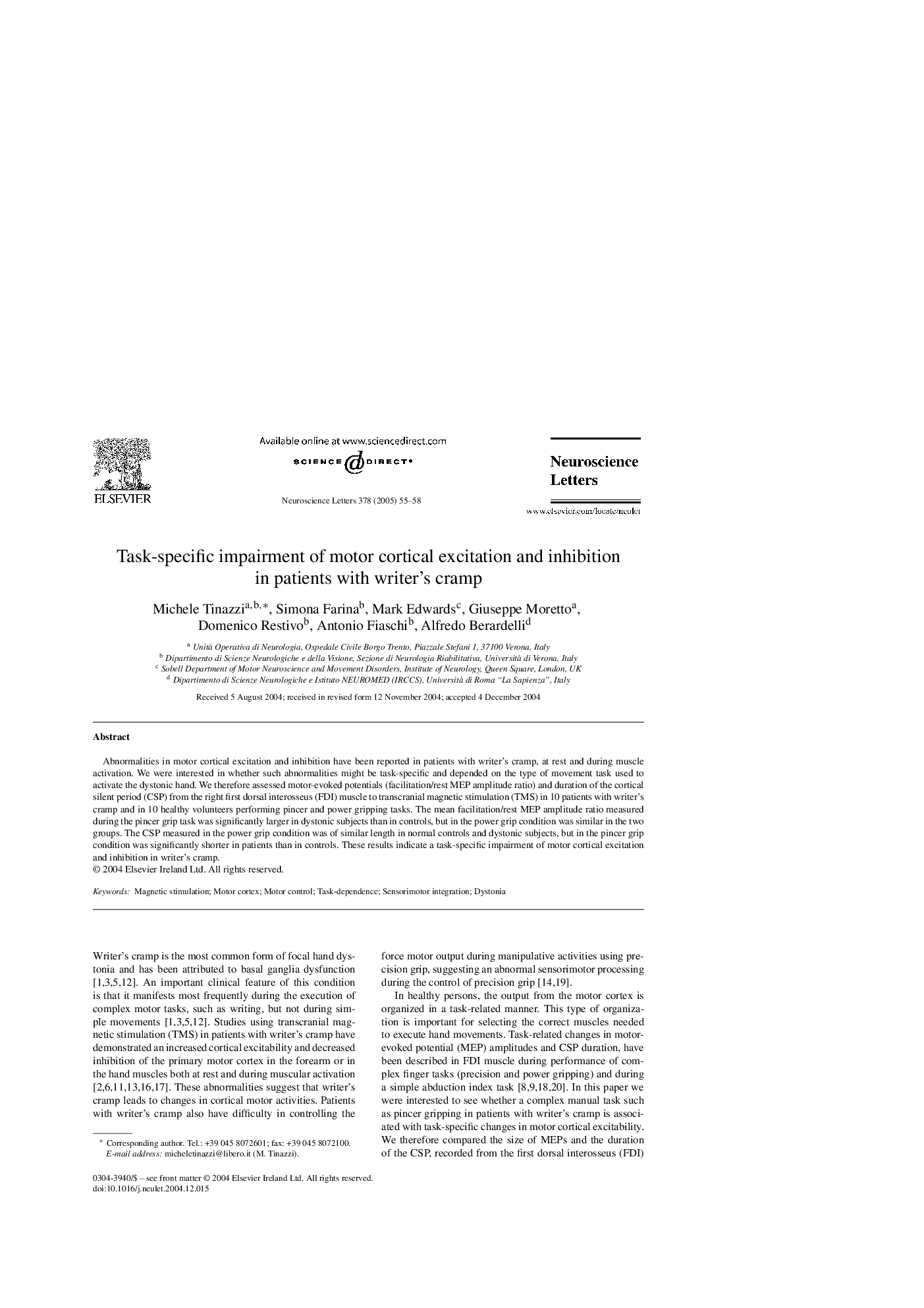| Article ID | Journal | Published Year | Pages | File Type |
|---|---|---|---|---|
| 9429326 | Neuroscience Letters | 2005 | 4 Pages |
Abstract
Abnormalities in motor cortical excitation and inhibition have been reported in patients with writer's cramp, at rest and during muscle activation. We were interested in whether such abnormalities might be task-specific and depended on the type of movement task used to activate the dystonic hand. We therefore assessed motor-evoked potentials (facilitation/rest MEP amplitude ratio) and duration of the cortical silent period (CSP) from the right first dorsal interosseus (FDI) muscle to transcranial magnetic stimulation (TMS) in 10 patients with writer's cramp and in 10 healthy volunteers performing pincer and power gripping tasks. The mean facilitation/rest MEP amplitude ratio measured during the pincer grip task was significantly larger in dystonic subjects than in controls, but in the power grip condition was similar in the two groups. The CSP measured in the power grip condition was of similar length in normal controls and dystonic subjects, but in the pincer grip condition was significantly shorter in patients than in controls. These results indicate a task-specific impairment of motor cortical excitation and inhibition in writer's cramp.
Keywords
Related Topics
Life Sciences
Neuroscience
Neuroscience (General)
Authors
Michele Tinazzi, Simona Farina, Mark Edwards, Giuseppe Moretto, Domenico Restivo, Antonio Fiaschi, Alfredo Berardelli,
